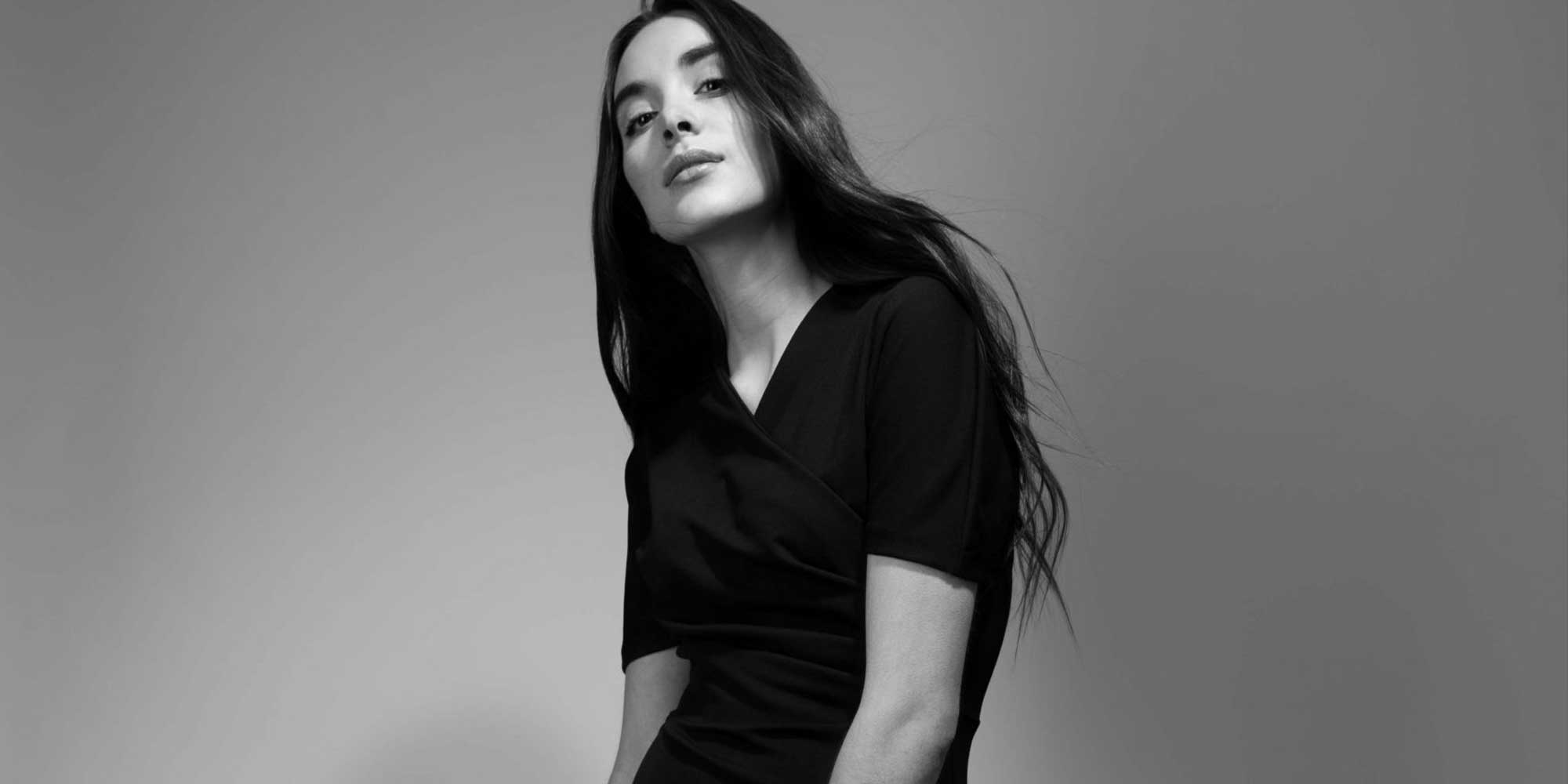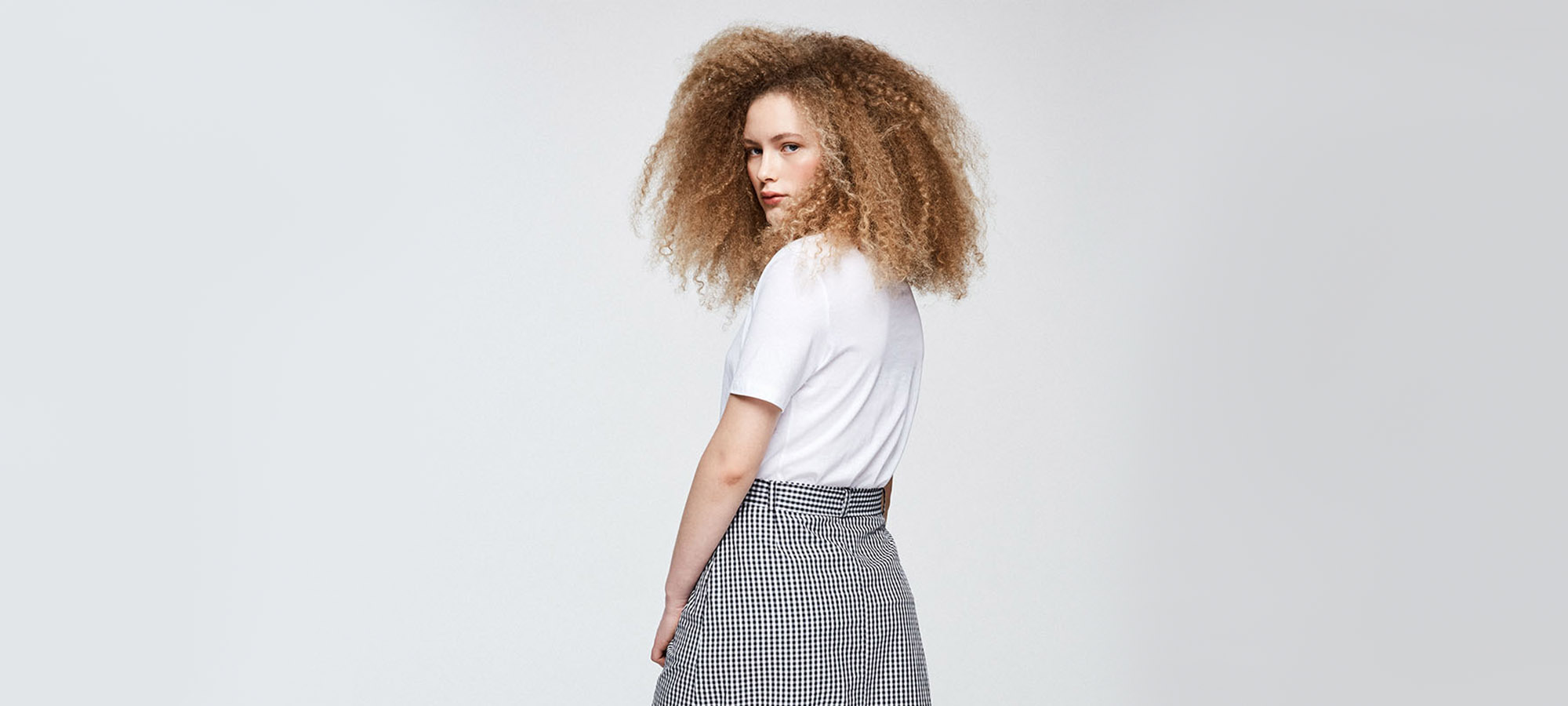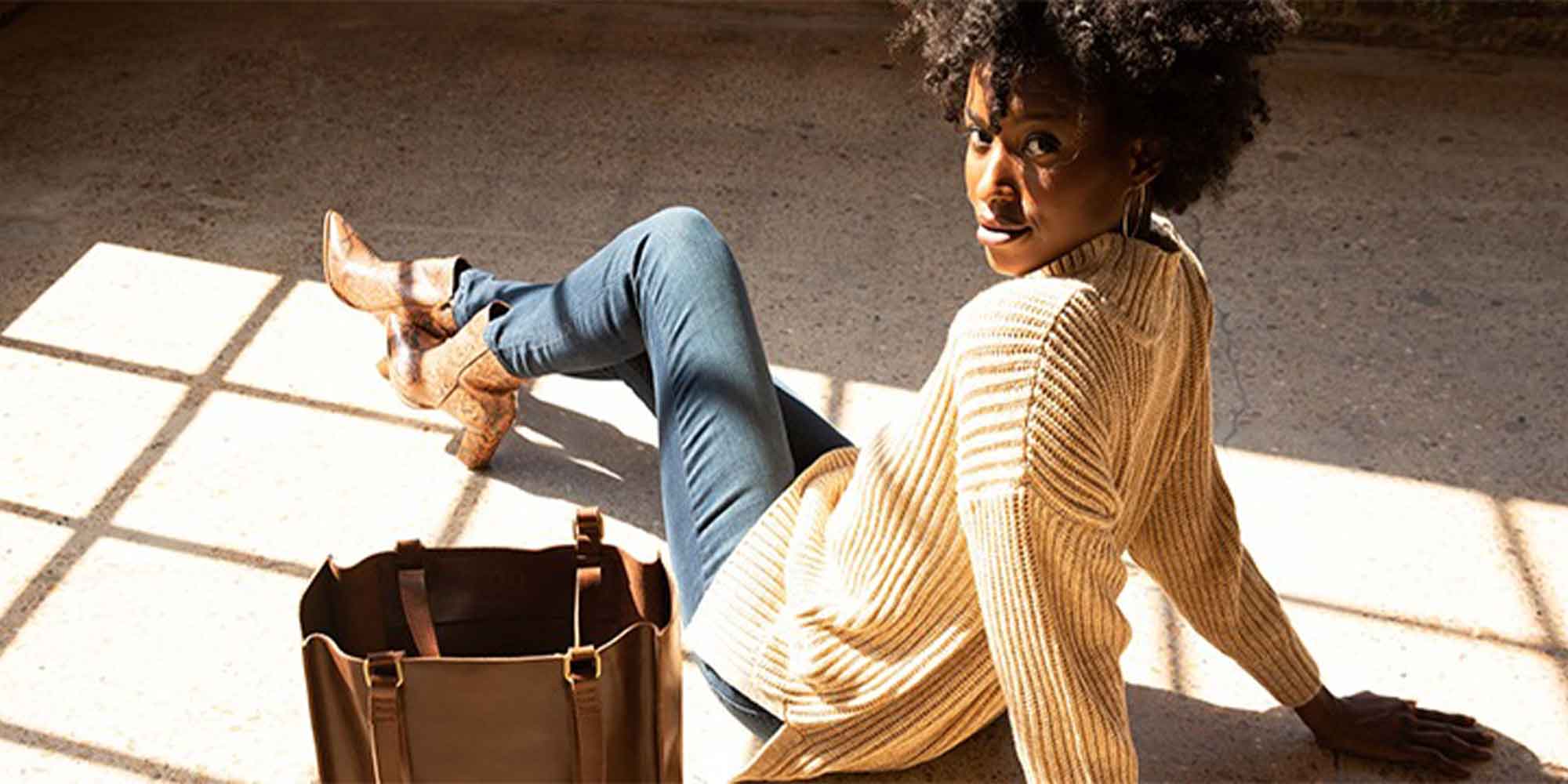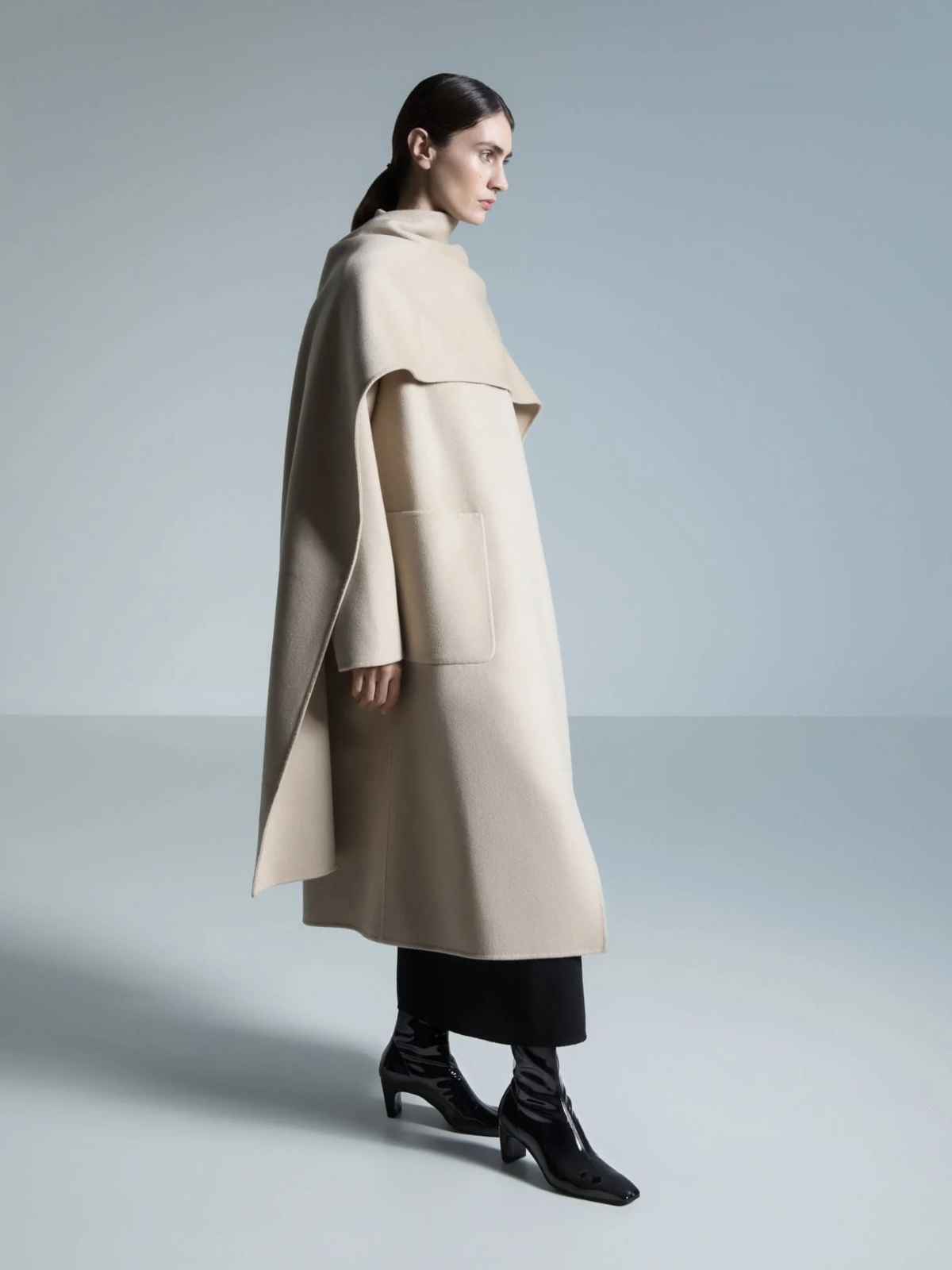Our editors curate highly rated brands that are first assessed by our rigorous ratings system. Buying through our links may earn us a commission—supporting the work we do. Learn more.
Swedish fast fashion brand Gina Tricot has captured the fashion world’s attention with its trendy offerings, but as conscious consumers, we must ask ourselves: how ethical is Gina Tricot? Today, we delve into the brand’s “Not Good Enough” rating. This article is based on the Gina Tricot rating published in July 2023 and may not reflect claims the brand has made since then. Our ratings analysts are constantly rerating the thousands of brands you can check on our directory.
‘Fast paced and exciting’ doesn’t align with ‘more sustainable’
Established in 1997, Gina Tricot is a Swedish fast fashion brand that has grown to become a prominent player in the fashion industry, offering a diverse range of womenswear and accessories for every occasion. With approximately 150 stores across four European countries, Gina Tricot invites consumers to “shop the latest trends and find [their] favourites in [its] wide selection that is constantly changing”.
At the same time, the brand claims it’s committed to “contributing to a more sustainable fashion industry” and that it’s “determined to continue pushing [itself] and to making progress in this regard”, setting important goals to be achieved by 2028.
There seems to be a contradiction between Gina Tricot’s vision of embracing the fast-paced nature of fashion and its aspirations for sustainability. In a world that calls for slowing down and consuming less, the constant pursuit of ever-changing trends (and collections) doesn’t align with the notion of a more sustainable fashion industry.
This brings us to ask: how is Gina Tricot really impacting people, the planet, and animals? Join us as we explore the question: how ethical is Gina Tricot?
Environmental impact
We rate Gina Tricot’s environmental impact “Not Good Enough”. For this section, we rate brands based on their environmental policies throughout their supply chains, including carbon emissions, wastewater management, business models, and product circularity. The brand says it always “[seeks] new ways to use resources efficiently and reduce [its] climate footprint”, which is commendable, but the brand’s still failing to address some key points.
Several factors contribute to Gina Tricot’s lower rating. While the brand incorporates some lower-impact materials, such as organic cotton, there are areas where Gina Tricot falls short in addressing its environmental impact.
Firstly, there is no evidence to suggest that Gina Tricot is taking meaningful action to reduce water usage in its supply chain. Water scarcity is a pressing global issue, and fashion brands have a responsibility to monitor and minimise their water consumption and impacts.
What’s more, Gina Tricot has not demonstrated any proactive measures to protect biodiversity within its supply chain. Preserving biodiversity is essential for maintaining healthy ecosystems.
Additionally, while Gina Tricot has set a science-based target to reduce greenhouse gas emissions in both its direct operations and supply chain, there’s no evidence it is on track. This lack of transparency is not uncommon. In our latest climate change report, we found that big brands are often setting bold targets, but a little digging reveals the targets are not all they’re made out to be. As we’ve seen, brands are rushing to set impressive-sounding targets to show their customers how concerned they are about the climate. Unfortunately, 51% of large brands with greenhouse gas emissions targets, like Gina Tricot, do not state whether they are on track to meet them. This underscores the need for governments to mandate reporting on greenhouse gas emissions.
Labour conditions
On the labour front, Gina Tricot also rates “Not Good Enough”. Here, we evaluate brands based on their policies and practices regarding workers’ rights, including child labour, living wages, and gender equality.
In Gina Tricot’s case, more than half of its final production stage is certified by the Business Social Compliance Initiative Code of Conduct (BSCI).
But unfortunately, there is no evidence that Gina Tricot provides financial security to its suppliers, which can lead to poor working conditions and low wages. Ensuring that suppliers receive fair and timely payments is essential for supporting workers’ wellbeing and livelihoods.
We also found no evidence Gina Tricot actively supports diversity and inclusion within its supply chain. Embracing diversity and promoting equality are crucial for fostering a fair and inclusive work environment for all employees, regardless of their background or identity.
And while Gina Tricot claims to have a program to improve wages, there is no evidence to suggest that it does ensure workers in most of its supply chain receive living wages. Gina Tricot claims “women constitute 97% of Gina Tricot’s workforce” and that the brand wants to “empower women in everything [it does]”. This is great, but the brand should start by ensuring women in its supply chain are paid a living wage. All workers in the fashion industry deserve to be paid enough to live a life of safety, health, and dignity. Transparent and verifiable methodologies, such as those used by organisations like The Asia Floor Wage Alliance and the Global Living Wage Coalition, can provide guidance on calculating minimum living wages.
Finally, during the height of the COVID-19 pandemic, Gina Tricot did not disclose adequate policies or safeguards to protect workers in its supply chain from the virus and its impacts. Ensuring the health, safety, and wellbeing of workers should be a top priority for brands, especially during times of crisis.
Animal welfare
When it comes to its impact on animals, Gina Tricot is doing a little better, but we’re not quite there yet: Gina Tricot rates “It’s a Start”.
The brand has a formal policy aligned with the Five Freedoms of animal welfare, but there is no clear evidence it’s put implementation mechanisms in place. It is important for brands to not only have policies but also actively enforce and monitor them to ensure the wellbeing of animals throughout their supply chains.
Gina Tricot uses animal-derived materials, including leather, exotic animal hair, and silk. But it does not use fur, angora, or exotic animal skin. The brand uses recycled wool and down in some of its products, which are commendable steps that can contribute to reducing waste and promoting circularity.
It is worth noting that Gina Tricot traces some of these animal-derived materials to the first stage of production. Traceability is crucial to ensuring that animal welfare standards are upheld and that materials are sourced more responsibly.
Overall rating: ‘Not Good Enough’
While Gina Tricot has made some small positive strides towards a more sustainable and responsible approach, there is still much work to be done if it wants to achieve its ambitious goals by 2028. It simply is “Not God Enough” for now.
To get a higher rating, the brand needs to intensify its commitment to eliminating hazardous chemicals, ensuring living wages for workers, and eliminating harmful animal-derived materials from its collections.
At the end of the day, Gina Tricot is still very much a part of the unsustainable fast fashion industry. Its promotion of “disposable” fashion and constant rotations of new trends and products has a huge environmental impact. An increasing amount of cheap clothing ends up in landfill after a few wears due to these reasons.
The clothing manufacturing process regularly involves the use of toxic dyes, solvents, and pesticides, is responsible for significant carbon emissions, and uses much of the world’s fresh water and land resources. While this is an industry-wide problem, there are more clothes pumped through the system by fast fashion brands—and it’s not clear the sustainability initiatives of Gina Tricot are enough to compensate.
So, while those cheaper price tags may be tempting, they are often a good indicator of the poor quality of the materials and garments. They also highlight that the people making those clothes are working in conditions that, while improving, are not where they should be.
Note that Good On You ratings consider hundreds of issues, and it is not possible to list every relevant issue in a summary of the brand’s performance. For more information, see our How We Rate page and our FAQs.
If you love the Gina Tricot vibe, we found better alternatives to help out.
Good swaps
“Good” and “Great” alternatives to Gina Tricot.


























